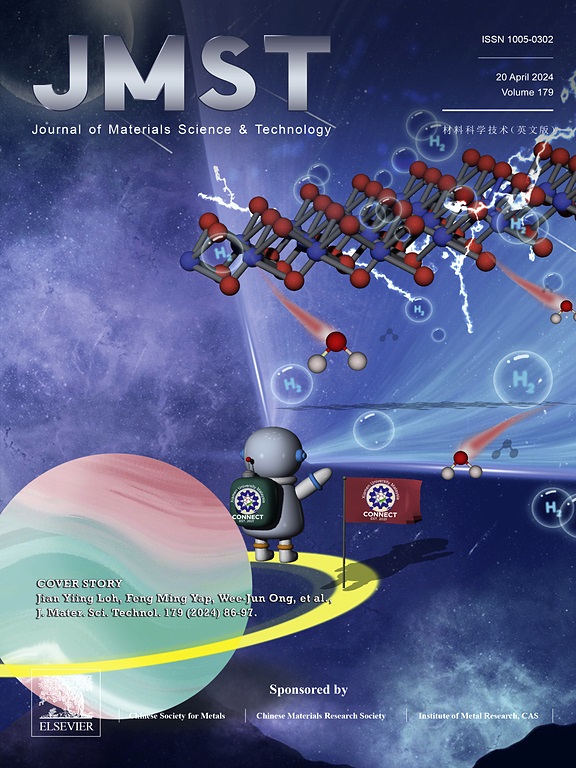Enhancing thermal stability of laser-powder bed fusion fabricated FeCoCrNi-Al alloy by introducing Al element segregation using in-situ alloying
IF 11.2
1区 材料科学
Q1 MATERIALS SCIENCE, MULTIDISCIPLINARY
引用次数: 0
Abstract
A method is proposed to enhance the thermal stability of laser-powder bed fusion fabricated (L-PBFed) FeCoCrNi alloy by introducing Al element segregation through in-situ alloying. The introduced Al segregation exists in two forms of B2/BCC phases, one in banded shape within the FCC matrix and the other as particles at grain boundaries (GBs). Experimental characterization and molecular dynamics (MD) simulations were used to reveal the mechanism of the thermal stability of the grain boundary (GB) and dislocation in high-temperature treatment at 1000 and 1200°C. At high temperatures, short-range uphill diffusion occurs within the banded B2/BCC phase, forming the dispersed B2/BCC phase with higher (Al, Ni) content. This extends the stability of the banded B2/BCC phase and ensures high-strain hardening. Additionally, the long-range diffusion of Al atoms from the banded B2/BCC into the FCC matrix utilizes GBs as rapid channels at high temperatures. This process stabilizes GBs by reducing their cohesive energy and maintaining the nailing effect of the B2/BCC phase at GBs. Furthermore, after high-temperature treatment, dislocations within the FCC matrix exhibit a relatively high-density level, and many dislocations are generated within the B2/BCC regions subsequent to phase transition. This is attributed to the geometrically necessary dislocation (GND) generation caused by lattice distortion stemming from variations in Al content in the FCC matrix and lattice shrinkage induced by the phase transformation. As a result, the mechanical properties exhibit remarkable resistance to softening compared to traditional L-PBFed single FCC phase alloys. In terms of tensile properties at room temperature, after treatment at 1000°C/1 h, ultimate tensile strength (UTS) increased from 797 to 873 MPa. Even after 10 h at 1200°C, the UTS retained 86% of its original value. In terms of tensile properties at high temperature, compared to the L-PBFed FeCoCrNi alloy, the alloys prepared in this work exhibit an increase in yield strength (YS) by approximately 100 MPa under the same temperature conditions. This work can provide a new perspective for improving the thermal stability of L-PBFed alloys.

求助全文
约1分钟内获得全文
求助全文
来源期刊

Journal of Materials Science & Technology
工程技术-材料科学:综合
CiteScore
20.00
自引率
11.00%
发文量
995
审稿时长
13 days
期刊介绍:
Journal of Materials Science & Technology strives to promote global collaboration in the field of materials science and technology. It primarily publishes original research papers, invited review articles, letters, research notes, and summaries of scientific achievements. The journal covers a wide range of materials science and technology topics, including metallic materials, inorganic nonmetallic materials, and composite materials.
 求助内容:
求助内容: 应助结果提醒方式:
应助结果提醒方式:


